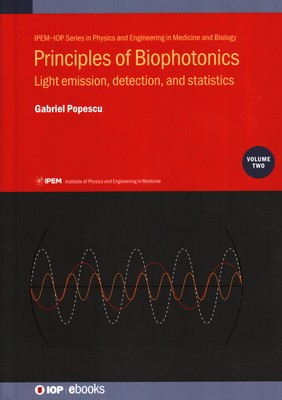
- We will send in 10–14 business days.
- Author: Gabriel Popescu
- Publisher: Institute of Physics Publishing
- ISBN-10: 075031642X
- ISBN-13: 9780750316422
- Format: 17.8 x 25.4 x 1.3 cm, kieti viršeliai
- Language: English
- SAVE -10% with code: EXTRA
Reviews
Description
Principles of Biophotonics, volume two describes detection and statistical representation of optical fields. Beginning by placing the visible spectrum in the context of the electromagnetic frequency range, this presentation stresses how thin of a sliver is normally called the optical spectrum. In addition to describing properties of light with technical accuracy, the most common radiometric quantities are introduced, and conversion to photon-based quantities is explicitly presented. For completeness, an analogy to the photometric quantities is also made, and the three fundamental mechanisms for generating light, blackbody radiation, fluorescence and laser emission, are covered. Each chapter contains a set of practice problems and additional references, and this book aims to build the foundation for further study in subsequent volumes.
EXTRA 10 % discount with code: EXTRA
The promotion ends in 22d.10:29:39
The discount code is valid when purchasing from 10 €. Discounts do not stack.
- Author: Gabriel Popescu
- Publisher: Institute of Physics Publishing
- ISBN-10: 075031642X
- ISBN-13: 9780750316422
- Format: 17.8 x 25.4 x 1.3 cm, kieti viršeliai
- Language: English English
Principles of Biophotonics, volume two describes detection and statistical representation of optical fields. Beginning by placing the visible spectrum in the context of the electromagnetic frequency range, this presentation stresses how thin of a sliver is normally called the optical spectrum. In addition to describing properties of light with technical accuracy, the most common radiometric quantities are introduced, and conversion to photon-based quantities is explicitly presented. For completeness, an analogy to the photometric quantities is also made, and the three fundamental mechanisms for generating light, blackbody radiation, fluorescence and laser emission, are covered. Each chapter contains a set of practice problems and additional references, and this book aims to build the foundation for further study in subsequent volumes.


Reviews